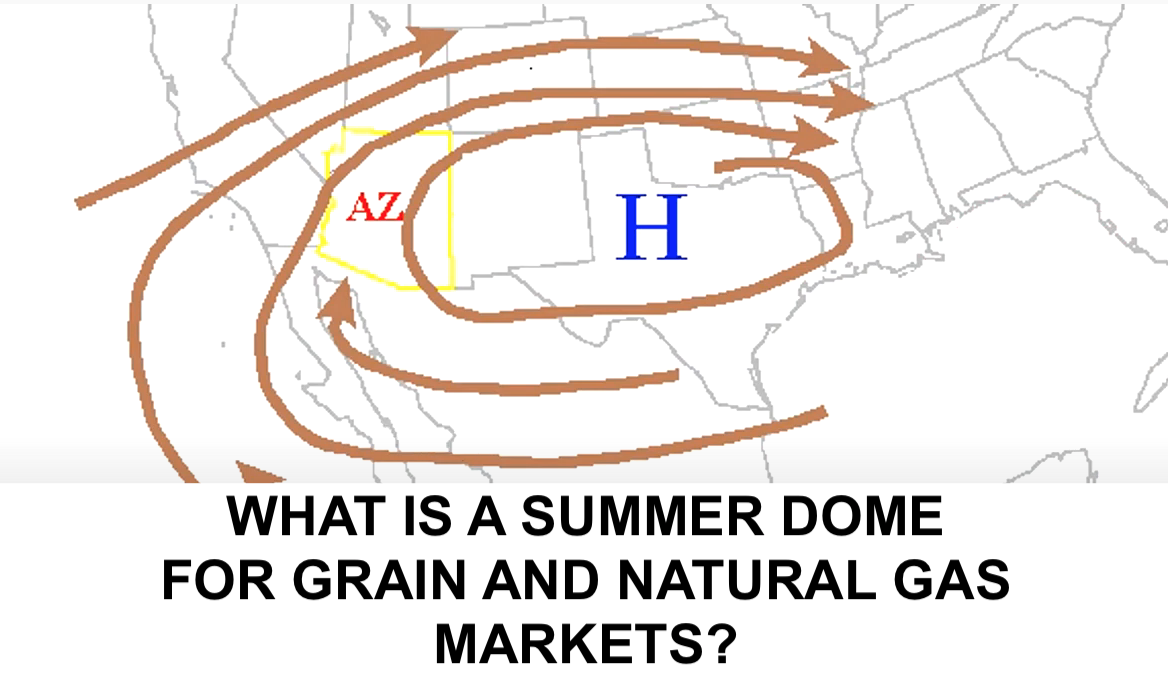What Is A Dome And How Does It Affect Grain And Natural Gas Trading?

Video Length: 00:04:39
In the video above (click above), I talk about what a “Dome is in meteorology” and how it can have a big influence on the natural gas and grain markets.
Commodity traders and farmers around the world always ask about what a dome is and whether this high-pressure ridge will bring heat to the eastern and Midwestern natural gas regions and if and when it will retreat to the west offering drought-stricken areas relief. We are seeing natural gas prices challenge multi-month highs today due to extreme heat in parts of the country and the hurricane season approaches. Grain markets are also soaring on the western corn belt drought and the dome centered overhead the western Midwest.
Energy traders often ask about a different time of dome too; the Bermuda High. How the dome sets up off the east coast of the United States and how strong it is has a big influence on the Atlantic hurricane season. For example, the position of the present Bermuda high this summer and fall could create more of a southerly flow in the jetstream and bring more hurricanes towards Florida this year (see map below). This is in contrast to last year when a more elongated dome (east to west structure) resulted in the historic number of hurricanes in the Gulf; particularly Louisiana.
Commodity traders and farmers around the world always ask about what a dome is and whether this high-pressure ridge will bring heat to the eastern and Midwestern natural gas regions and if and when it will retreat to the west offering any drought-stricken areas relief.

Source of the map: Accuweather--Bermuda High
While it is a Midwestern dome that is bringing drought conditions to much of the Dakotas that is extending into Iowa, exciting grain traders, I do not see extreme sustained heat for the main consuming areas in the Northeast, at least not yet.
The map below is during the summer of 2012 (the last big summer bull market in grains) the dome was first over the Midwest in June and July but then retreated to the west coast by August. This resulted in a late summer collapse in grain prices as more normal rainfall and temperatures relieved some of the droughts. Notice too how natural gas prices eventually collapsed when the dome moved west.
KEY POINT--Even though the Midwestern drought dome is not hitting eastern natural gas regions with above-normal cooling demand and the Bermuda High is not strong enough, nor close to New York City to produce extreme heat, there are other factors that are bullish natural gas prices unless we see consistent major cooing then normal summer weather.

Source: Barcharts Summer, 2012 natural gas prices

Source: Jim Roemer's Climatepredict.com software
Learn how to offset risk in the stock and financial markets but trading conservative commodity ETFs, options, etc., and get expert analysis with 35 years of experience. Learn more and get a free ...
more


